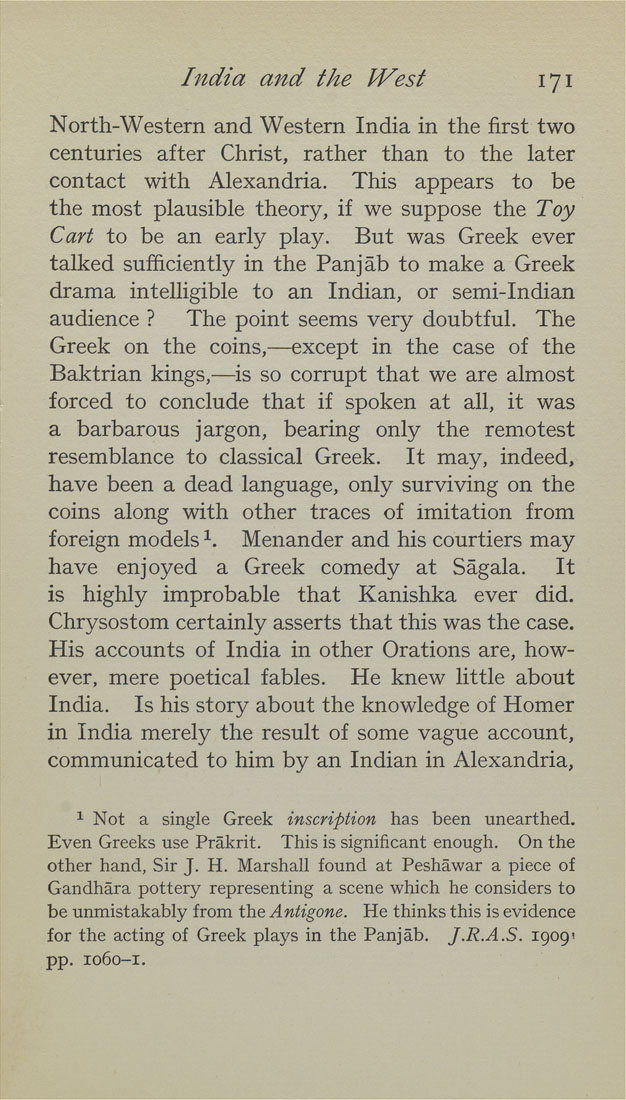India and the West 171
North-Western and Western India in the first two
centuries after Christ, rather than to the later
contact with Alexandria. This appears to be
the most plausible theory, if we suppose the Toy
Cart to be an early play. But was Greek ever
talked sufficiently in the Panjab to make a Greek
drama intelligible to an Indian, or semi-Indian
audience ? The point seems very doubtful. The
Greek on the coins,—except in the case of the
Baktrian kings,—is so corrupt that we are almost
forced to conclude that if spoken at all, it was
a barbarous jargon, bearing only the remotest
resemblance to classical Greek. It may, indeed,
have been a dead language, only surviving on the
coins along with other traces of imitation from
foreign models ^. Menander and his courtiers may
have enjoyed a Greek comedy at Sagala. It
is highly improbable that Kanishka ever did.
Chrysostom certainly asserts that this was the case.
His accounts of India in other Orations are, how¬
ever, mere poetical fables. He knew little about
India. Is his story about the knowledge of Homer
in India merely the result of some vague account,
communicated to him by an Indian in Alexandria,
^ Not a single Greek inscription has been unearthed.
Even Greeks use Prakrit. This is significant enough. On the
other hand. Sir J. H. Marshall found at Peshawar a piece of
Gandhara pottery representing a scene which he considers to
be unmistakably from the Antigone. He thinks this is evidence
for the acting of Greek plays in the Panjab. J.R.A.S. 19091
pp. 1060-1.
|








